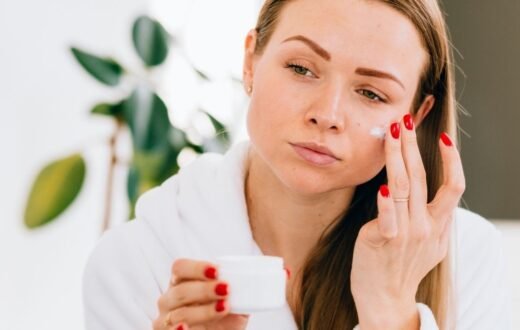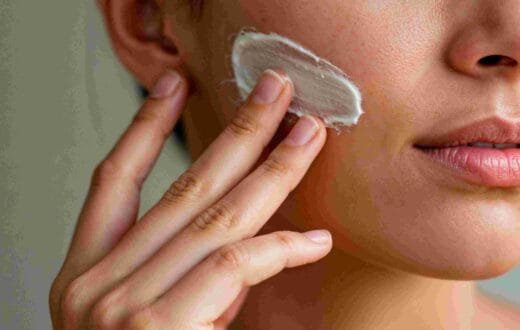Are you tired of wandering the beauty aisle, wondering which products really suit your skin – and your values? If you’re a woman between 18-45 who cares about both looking good and doing good for the planet, this guide is for you. We’ll explore how to choose natural skin care products tailored to your skin type — from oily or dry, to combination or sensitive — and show you how a smart sun-protection pick like Sunshield Sunscreen can become the cornerstone of your clean-beauty routine. You’ll learn what labels to look for, which ingredients to love (and avoid), how to match textures and finishes to your skin’s unique needs, and how to build a routine that’s both skin-smart and earth-friendly. Let’s start making conscious beauty choices that feel as good as they look.
Why Choosing Natural Cosmetics Matters
When you browse a shelf and see “natural”, “clean beauty”, or “eco-friendly”, it’s not just marketing buzz — it reflects a growing shift in how we care for our skin and the planet. For women aged 18-45 especially, cosmetics are no longer just about glamour: they’re about values, health and sustainability.
Understanding “natural” vs. conventional
“Natural” cosmetics generally emphasise plant-based ingredients, minimal synthetic additives, cruelty-free practices, and often eco-conscious packaging. Conventional cosmetics may rely on synthetic chemistry, heavy fragrance, and intensive manufacturing methods. The appeal of natural: gentler on skin, often fewer irritants, and more aligned with wellness or environmental values. However, “natural” isn’t a regulated guarantee of safety or suitability — you still need to choose wisely.
Environmental, ethical and health benefits
Opting for natural cosmetics can mean: fewer harsh chemicals washing into waterways, cruelty-free testing, reduced packaging waste, and products that better support a skin barrier rather than aggressively strip it. For eco-aware women, these align with a mindful lifestyle.
How the term “natural” can be misleading
Be aware: many products marketed as “natural” still contain synthetic ingredients or shady claims. Some brands use “green wash” tactics — a few botanical extracts don’t make the entire formula truly clean. That’s why reading the ingredient list and understanding your skin type matter. As one source says, not all “natural” cosmetics are created equal.
Identifying Your Skin Type: The Foundation of Smart Cosmetic Choices
Before you splash on your next “natural” serum or reach for a trendy “clean” moisturizer, first ask: What skin type do I really have? The reason: a mismatched product can make things worse — even if it’s labelled “organic”.
The main skin types: oily, dry, combination, normal, sensitive
According to dermatologists, main skin types are defined by how much sebum your skin produces, and how reactive it is.
Oily skin: excess sebum, visible shine, larger pores, acne-prone.
Dry skin: low sebum, tight/often flaky surface, may feel rough or itchy.
Combination skin: mix of oily T-zone and drier cheeks.
Normal skin: balanced — not too oily, not too dry.
Sensitive skin: often red, stings easily, reacts to products. (Can overlap with other types.)

How to perform a quick at-home test
Here’s an easy way you can gauge your skin type: use the “watch & wait” or blotting sheet method. After cleansing, wait ~30 minutes. If your face is shiny all over → oily. If you feel tight/flaky → dry. If only the T-zone is shiny and cheeks feel dry → combination. If no discernible oil or dryness → likely normal.
Skin type vs skin condition: nuance for beginners
Important: Your skin type is a baseline, but skin conditions (like acne, rosacea, sensitivity from sun) may make your schedule change. For example – you might have oily skin but now it’s sensitive after a peel. So track your skin, be flexible, and tailor your natural cosmetic choices accordingly.
What to Look For in Natural Cosmetics for Each Skin Type
Once you know your skin type, you can choose natural cosmetics that truly support it — instead of hoping “natural” alone will fix all.
Ingredients to seek
Here are some examples of plant-based/mineral ingredients that work well:
For dry skin: shea butter, argan oil, avocado oil, hyaluronic acid, squalane.
For oily skin: jojoba oil (mimics sebum but won’t overload), green tea extract, tea tree oil, witch hazel, alpha hydroxy acids (modestly) for oil-control.
For sensitive skin: aloe vera, chamomile, shea butter, squalane.
Ingredients to avoid
Even in natural cosmetics, some things to steer clear of (especially for sensitive or reactive skin types):
Harsh synthetic fragrances, sulfates, phthalates, parabens — these may trigger irritation or undermine your skin barrier.
Heavy synthetic oils or occlusive ingredients that can clog pores in oily/combination skin.
Marketing “natural” claims without full transparency — e.g., only 1% natural ingredient while bulk is synthetic filler.
Certifications and transparency
Look for trusted certifications or brand practices: vegan & cruelty-free logos, reef-safe claims if you’re eco-aware, third-party testing for purity. A brand that lists full ingredient disclosures and sources will often be more trustworthy.

The Role of Sunscreen in a Natural Cosmetics Routine
No matter how beautifully you pick your cleanser, moisturizer or serum, if you skip sun protection you’re leaving a huge gap. A product like Sunshield Sunscreen becomes a cornerstone — not optional.
Why daily sun protection is non-negotiable
UV exposure is a major driver of premature ageing (wrinkles, dark spots), skin damage and in severe cases, skin cancer. Studies emphasize that sunscreen with SPF 30 or higher and broad-spectrum protection (UVA+UVB) is essential.
For active, skincare-conscious individuals, the consistency of sun protection is just as important as the product type.
Mineral (physical) vs chemical (organic) sun filters
Mineral sunscreens (also called physical) use zinc oxide and/or titanium dioxide to reflect UV rays away from skin. Favoured for sensitive skin and reef safety.
Chemical sunscreens absorb UV radiation and convert it into heat. They tend to be lighter, but may irritate some skin types or contain issues for the environment.
Choosing a formula that aligns with your skin type (and your values) is key.
How a product like Sunshield Sunscreen fits into your natural beauty regime
If you’re shifting into “clean + natural” cosmetics, choosing a reef-safe, mineral-based, broad-spectrum sunscreen is a smart move. It protects your skin, fits your environmental values, and anchors your routine. When this step is solid, you’re more confident layering other natural cosmetics knowing your foundation is strong.
How to Choose the Right Sunshield Sunscreen for Your Skin Type
Let’s zero in on how to pick the best version of “Sunshield” (or comparable natural sunscreen) for your skin type — because one size doesn’t fit all.
Key label reads: “broad spectrum”, “mineral”, “reef safe”, “non-comedogenic”
When scanning a bottle, the must-haves include:
Broad spectrum = protects against UVA + UVB rays (not just sunburn but deeper damage).
Mineral / physical filters if you prefer gentler formulas (zinc oxide or titanium dioxide).
Reef safe or coral-reef friendly if your environmental values include marine ecosystems.
Non-comedogenic (won’t clog pores) if you have oily, combination or acne-prone skin.
Matching texture & finish to skin type
Oily or acne-prone skin: Choose a lightweight, fluid, matte finish, non-occlusive mineral sunscreen to avoid shine and clogging.
Dry skin: A cream or richer texture with hydrating ingredients (glycerin, ceramides) that also offers sun protection.
Combination skin: A hybrid texture — non-greasy but with some hydration; consider separate zones if needed.
Sensitive skin: Pure mineral filter, fragrance-free, minimal additives.
Normal skin: You have more flexibility — choose what feels comfortable, but make sure efficacy (SPF, broad spectrum) is solid.
How to test and patch‐test a new sunscreen
Before full face use: apply a small amount near the jawline or on the side of the neck for 24 hours. Check for irritation, breakouts, redness. Then, when applying full, use the recommended amount (~½ teaspoon for face & neck) and reapply every 2–3 hours when out in the sun.
Practical Tips: Shopping Smart for Natural Cosmetics
Whether you’re new to clean beauty or refining your routine, these practical tips will help you make savvy purchases.
Reading the ingredient list: top 5 ingredients rule
The first five ingredients make up ~80% of the formula. If you see unknown synthetic chemicals dominating those first spots, ask whether the product is truly “natural”.
Checking credibility: certifications, third-party testing, brand ethics
Look out for: cruelty-free logos, certified organic or natural seals, reef-safe claims, transparency in sourcing and packaging sustainability. A brand that shares ingredient sourcing, environmental commitments and avoids green-washing is a better bet.
Paying attention to packaging, storage, shelf life
Natural cosmetics often avoid heavy preservatives, so packaging (opaque bottles, pumps) and storage (cool, dry place) affect efficacy. Sunscreens also degrade with heat or sunlight — so store accordingly.
Routine Build for Each Skin Type (Including a Sunshield Step)
Let’s walk through sample routines, factoring in natural cosmetics and the Sunshield sunscreen step — tailored to various skin types.
Oily / acne-prone skin routine
Cleanser: gentle gel, non-soap base
Toner/Essence: contains niacinamide, green tea or witch hazel
Lightweight serum: maybe tea tree oil, botanical extract
Moisturizer: oil-free gel, minimal ingredients
Sunshield Sunscreen: lightweight, mineral, matte finish, broad spectrum
Optional: mineral BB/CC with SPF for makeup layer
For oily skin, avoid heavy oils; choose non-comedogenic natural cosmetics.
Dry / dehydrated skin routine
Cleanser: creamy, non-stripping
Hydrating toner/essence: with hyaluronic acid, glycerin
Serum: botanical oils like argan, squalane
Moisturizer: richer cream with shea butter, ceramides
Sunshield Sunscreen: cream-texture, mineral or hybrid, includes hydrating support
Optional: tinted mineral sunscreen as final layer for makeup
Dry skin benefits from natural cosmetics that support hydration and barrier repair.
Combination skin routine
Cleanser: balanced formula
Toner/essence: gentle hydration
Serum: light oil or liquid
Moisturizer: medium weight, maybe gel-cream
Sunshield Sunscreen: fluid formula, broad spectrum, matches both oily T-zone and drier cheeks
Optional: zone-based approach — lighter sunscreen in T-zone, richer on cheeks
Combination skin needs flexible formulas — natural cosmetics that adapt.
Sensitive or reactive skin routine
Cleanser: fragrance-free, minimal ingredients
Soothing toner: aloe, chamomile
Serum: minimal botanical actives
Moisturizer: simple ingredients, squalane, shea butter
Sunshield Sunscreen: mineral filter (zinc oxide/titanium dioxide), fragrance-free, broad spectrum
Patch-test always before full application
For sensitive skin, natural cosmetics matter even more — less is often more.

Common Mistakes and How to Avoid Them
Even the best intent can go sideways if you fall into common pitfalls. Let’s highlight them and how to sidestep them.
Buying trendy over compatible
Just because a product is “viral” or labelled “natural” doesn’t mean it suits your skin type. Always pair product to skin needs — not just brand hype.
Ignoring patch-test and mismatch of skin type
Especially when changing to new natural cosmetics, skipping a patch test can lead to breakouts, irritation, or reaction. Also don’t use a heavier cream designed for dry skin if you’re oily.
Assuming “natural” means “safe for everyone”
Natural formulas still have active ingredients and can affect skin differently. Even plant extracts can irritate sensitive skin. Ingredients matter, not just label.
Skipping sunscreen or using wrong formula for your skin type
Many think “natural cosmetics” mean skipping the sunscreen layer, but sun protection remains essential. Also choosing a heavy creamy sunscreen when you have oily skin might cause breakouts or discomfort.
Quick Takeaways / Key Points
Identify your skin type (oily, dry, combination, normal, sensitive) before choosing any natural cosmetics.
“Natural” doesn’t automatically mean suitable — texture, ingredient list, and formulation matter.
Sun protection is non-negotiable; a broad spectrum mineral sunscreen like Sunshield Sunscreen is a smart alignment of skin health + eco-values.
Choose textures and finishes that match your skin type: matte for oily, rich cream for dry, balanced for combination.
Read the first five ingredients of any product; avoid heavy synthetics, unnecessary fragrance, and opaque marketing.
Patch-test new products even if they are labelled natural — your skin’s formula matters more than the label.
Sustainability covers more than ingredients: packaging, brand ethics, and usage matter too.
Conclusion
Choosing the right natural cosmetics is more than a shopping decision—it’s a thoughtful approach to how your skin, your ethics, and your lifestyle intersect. When you understand your skin type, evaluate ingredients and labels, and include a powerful step like Sunshield Sunscreen for daily protection, you’re building a beauty ritual that is sustainable, effective, and aligned with your values. For women aged 18-45 who care about their skin and the planet, this is the sweet spot: clean beauty that works. Now it’s your turn: audit your current beauty shelf, identify one product that doesn’t match your skin type or your values, and choose a smarter alternative this week.
FAQs
Q1: Is mineral sunscreen always the best “natural” option for everyone?
A1: Not always — mineral (zinc oxide / titanium dioxide) sunscreens are popular for sensitive skin and eco-friendly values, but texture, finish and skin type still matter. For example, oily skin may prefer a lightweight mineral fluid, rather than a thick cream.
Q2: How much sunscreen should I use daily if I’m using natural cosmetics?
A2: Regardless of “natural” label, you should apply about ½ teaspoon (≈ 2 finger-lengths) to face & neck, and reapply every 2-3 hours when exposed to sun. Consistent use matters more than brand.
Q3: Can I skip sunscreen if I only use natural cosmetics with antioxidant ingredients?
A3: No. Antioxidants support skin health but do not replace sun filter protection. UV rays cause damage that antioxidants alone can’t block; a proper sunscreen like Sunshield remains essential.
Q4: My skin is combination-oily but I want richer natural cosmetics. How do I choose?
A4: For combination/-oily skin, pick lighter textures (gel-cream, fluid) for moisturizer, and choose a natural sunscreen with a matte or semi-matte finish. You can still pick botanical actives but avoid heavy occlusive oils. Use Sunshield variant labelled “light weight” or “oil-free” if available.
Q5: How do I know if a natural cosmetic brand is actually eco-friendly and sustainable?
A5: Check for transparency: ingredient lists (top 5 ingredients), packaging (refillable, minimal plastic), certifications (cruelty-free, reef-safe), sourcing statements (organic, fair trade). Brands that hide these details may fall into “green-wash”.
Share Your Experience
I’d love to hear from you: Which skin type do you identify with, and what’s one natural cosmetic you’re hesitant to invest in? Share your thoughts in the comments — and if you found this article helpful, please share on social media so we can help more wellness-minded women make smart, sustainable choices.







